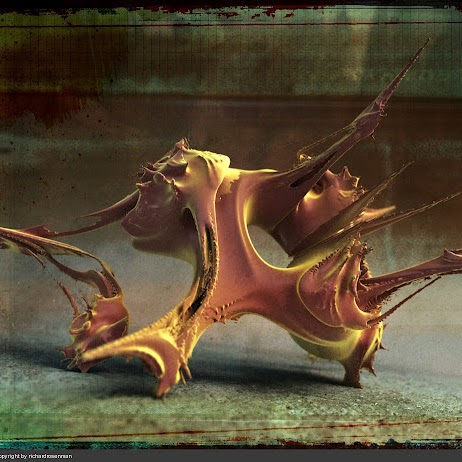Douglas L Christensen
age ~66
from Lake City, FL
- Also known as:
-
- Douglass L Christensen
- Dou Christensen
- Christensen Dou
- Phone and address:
-
9574 SW County Road 240, Lake City, FL 32024
(386)7557559
Douglas Christensen Phones & Addresses
- 9574 SW County Road 240, Lake City, FL 32024 • (386)7557559
- Salt Lake Cty, UT
- Columbus, OH
Work
-
Company:Christensen, Fonder, Dardi & Herbert PLLC
-
Address:
Specialities
Intellectual Property
Us Patents
-
Apparatus For Multichannel Fluorescent Immunoassays
view source -
US Patent:6340598, Jan 22, 2002
-
Filed:Dec 8, 1998
-
Appl. No.:09/207187
-
Inventors:James N. Herron - Salt Lake City UT
Douglas A. Christensen - Salt Lake City UT
Karin D. Caldwell - Salt Lake City UT
Vera Janatová - Prague, CZ
Shao-Chie Huang - Salt Lake City UT
Hsu-Kun Wang - Salt Lake City UT -
Assignee:University of Utah Research Foundation - Salt Lake City UT
-
International Classification:G01N 33543
-
US Classification:436518, 385 12, 385123, 422 55, 422 57, 422 8205, 422 8208, 422 8211, 435 75, 4352871, 4352872, 4352887, 435808, 436164, 436172, 436512, 436527, 436805
-
Abstract:Methods and apparatus for evanescent light fluoroimmunoassays are disclosed. The apparatus employs a planar waveguide and optionally has multi-well features and improved evanescent field intensity. The preferred biosensor and assay method have the capture molecules immobilized to the waveguide surface by site-specific coupling chemistry. Additionally, the coatings used to immobilize the capture molecules provide reduced non-specific protein adsorption.
-
Integrated Optic Waveguide Immunosensor
view source -
US Patent:6350413, Feb 26, 2002
-
Filed:Oct 5, 1999
-
Appl. No.:09/412731
-
Inventors:W. Monty Reichert - Durham NC
James N. Herron - Salt Lake City UT
Douglas A. Christensen - Salt Lake City UT
Hsu-Kun Wang - Salt Lake City UT -
Assignee:University of Utah Research Foundation - Salt Lake City UT
-
International Classification:G01N 3353
-
US Classification:422 8211, 422 8205, 436150, 436164, 385 12
-
Abstract:A step-gradient composite waveguide for evanescent sensing in fluorescent binding assays comprises a thick substrate layer having one or more thin film waveguide channels deposited thereon. In one embodiment, the substrate is silicon dioxide and the thin film is silicon oxynitride. Specific binding molecules having the property of binding with specificity to an analyte are immobilized on the surface of the thin film channels. In preferred embodiments, the composite waveguide further includes light input coupling means integrally adapted to the thin film channels. Such light coupling means can be a grating etched into the substrate prior to deposition of the thin film, or a waveguide coupler affixed to the upper surface of the thin film. The waveguide coupler has a thick input waveguide of high refractive index which receives the laser light through one end and propagates it by total internal reflection. The propagated light is then coupled evanescently into the thin film waveguide across a spacer layer of precise thickness and having an index of refraction lower than either the input waveguide or the thin-film waveguide.
-
Lens And Associatable Flow Cell
view source -
US Patent:6356676, Mar 12, 2002
-
Filed:Jun 30, 2000
-
Appl. No.:09/608714
-
Inventors:James N. Herron - Salt Lake City UT
Douglas A. Christensen - Salt Lake City UT
Victor A. Pollak - Salt Lake City UT
Richard D. McEachern - Ann Arbor MI
Eric M. Simon - Salt Lake City UT -
Assignee:University of Utah Research Foundation - Salt Lake City UT
-
International Classification:G02B 626
-
US Classification:385 12, 385 15, 385 33, 385 37, 385130, 385146, 422 8211
-
Abstract:Improvements in a biosensor of the type having reservoirs or wells for analyzing a biological liquid are disclosed. A biosensor includes a waveguide placed between a plurality of members such as plates at least one of the members being formed to define the walls of the reservoirs where the liquid is biologically analyzed. The walls of the reservoirs are made of an inert, opaque material such as a metal. Although the biosensor may include a gasket, the gasket is associated with the members and waveguide in such a way (e. g. , by recessing the gasket into a channel formed into a metal plate) so that the gasket does not form any significant portion of the reservoir wall. Waveguides of varying composition (e. g. , plastic, quartz or glass) may be associated with the members to form the biosensor. The metal plate of the biosensor has input and output ports for infusing, draining, or oscillating the liquid to be analyzed in the reaction reservoir.
-
Lens And Associatable Flow Cell
view source -
US Patent:6611634, Aug 26, 2003
-
Filed:Mar 11, 2002
-
Appl. No.:10/095540
-
Inventors:James N. Herron - Salt Lake City UT
Douglas A. Christensen - Salt Lake City UT
Victor A. Pollak - Salt Lake City UT
Richard D. McEachern - Ann Arbor MI
Eric M. Simon - Salt Lake City UT -
Assignee:University of Utah Research Foundation - Salt Lake City UT
-
International Classification:G02B 600
-
US Classification:385 12, 385 14, 385129, 385130, 385131, 385 33, 422 8205, 422 8211, 436518, 356317
-
Abstract:Improvements in a biosensor are disclosed. A biosensor includes a waveguide, at least a portion of which is substantially planar. One or more reservoirs may be formed adjacent to a chemistry-bearing surface of the waveguide. The biosensor may include a gasket to form a seal between the waveguide and side walls of the reservoir. A sample solution may be introduced into the reservoir or otherwise onto the surface of a waveguide through an input port. Waveguides of varying composition (e. g. , plastic, quartz, glass, or other suitable waveguide materials) may be used in the biosensor. Also disclosed is a sled-shaped waveguide, which includes a planar portion and a lens at an end thereof and angled relative thereto for coupling light into the waveguide.
-
Ultrasonic Vascular Imaging System And Method Of Blood Vessel Cannulation
view source -
US Patent:6755789, Jun 29, 2004
-
Filed:Feb 5, 2002
-
Appl. No.:10/072662
-
Inventors:Bradley J. Stringer - Farmington UT
Gary A. Simmons - Farmington UT
Douglas A. Christensen - Salt Lake City UT
Shayne Messerly - Farmington UT
Cameron P. Ford - Kaysville UT
Robert W. Evensen - Layton UT -
Assignee:Inceptio Medical Technologies, LLC - Farmington UT
-
International Classification:A61B 814
-
US Classification:600461, 600441
-
Abstract:An apparatus, method and system for cannulation of blood vessels. The apparatus comprises a sensor assembly including two linear transducer arrays oriented perpendicularly to each other to form a âTâ shape to provide substantially simultaneous ultrasound images of at least one blood vessel in a portion of a patients body in two perpendicular planes. The apparatus may also include one or more Doppler transducer elements to transmit and receive one or more Doppler beams at an incident angle beneath one of the transducer arrays and in alignment therewith to determine blood flow direction and velocity within the at least one blood vessel. The sensor assembly may be disposed within an elongated, flexible, protective sheath and secured to a graphically marked cover to facilitate orientation of the sensor assembly on the patient and guidance of a needle towards a desired target vessel during the cannulation procedure. The cover may also include associated structure to cooperate with a reference location element to place, align and secure the sensor assembly to the patients skin at a desired location.
-
Composite Waveguide For Solid Phase Binding Assays
view source -
US Patent:6911344, Jun 28, 2005
-
Filed:Nov 3, 1998
-
Appl. No.:09/185318
-
Inventors:W. Monty Reichert - Durham NC, US
James N. Herron - Salt Lake City UT, US
Douglas A. Christensen - Salt Lake City UT, US
Hsu-Kun Wang - Salt Lake City UT, US
Jacob D. Durtschi - Salt Lake City UT, US -
Assignee:BioCentrex, LLC - Culver City CA
-
International Classification:G01N033/543
-
US Classification:436518, 356317, 356318, 385 12, 385123, 385129, 422 8205, 422 8208, 422 8211, 435 6, 435 75, 4352871, 4352872, 4352887, 435808, 436164, 436172, 436527, 436531, 436805
-
Abstract:A step-gradient composite waveguide for evanescent sensing in fluorescent binding assays comprises a thick substrate layer having one or more thin film waveguide channels deposited thereon. In one embodiment, the substrate is silicon dioxide and the thin film is silicon oxynitride. Specific binding molecules having the property of binding with specificity to an analyte are immobilized on the surface of the thin film channels. In preferred embodiments, the composite waveguide further includes light input coupling means integrally adapted to the thin film channels. Such light coupling means can be a grating etched into the substrate prior to deposition of the thin film, or a waveguide coupler affixed to the upper surface of the thin film. The waveguide coupler has a thick input waveguide of high refractive index which receives the laser light through one end and propagates it by total internal reflection. The propagated light is then coupled evanescently into the thin film waveguide across a spacer layer of precise thickness and having an index of refraction lower than either the input waveguide or the thin-film waveguide.
-
Apparatus And Methods For Multi-Analyte Homogeneous Fluoro-Immunoassays
view source -
US Patent:6979567, Dec 27, 2005
-
Filed:Nov 13, 2001
-
Appl. No.:10/008339
-
Inventors:James N. Herron - Salt Lake City UT, US
Douglas A. Christensen - Salt Lake City UT, US
Hsu-Kun Wang - Salt Lake City UT, US
Karin Caldwell - Salt Lake City UT, US
Vera Janatová - Prague, CZ
Shao-Chie Huang - Salt Lake City UT, US -
Assignee:BioCentrex, LLC - Culver City CA
-
International Classification:C12M003/00
-
US Classification:4352871, 422 55, 422 57, 422 58, 422 8205, 422 8208, 422 8211, 4352872, 4352879, 4352885, 4352887, 435808, 436164, 436165, 436514, 436518, 436527, 436531, 436805, 436807, 385 12, 385129, 385130, 356418
-
Abstract:Methods and apparatus for evanescent light fluoroimmunoassays are disclosed. The apparatus employs a planar waveguide with an integral semicylindrical lens, and has multi-analyte features and calibration features, along with improved evanescent field intensity. A preferred embodiment of the biosensor and assay method has patches of capture molecules, each specific for a different analyte disposed adjacently within a single reservoir. The capture molecules are immobilized to the patches on the waveguide surface by site-specific coupling of thiol groups on the capture molecules to photo-affinity crosslinkers, which in turn are coupled to the waveguide surface or to a nonspecific binding-resistant coating on the surface. The patches of different antibodies are produced by selectively irradiating a portion of the waveguide surface during the process of coupling the photo-affinity crosslinkers, the selective irradiation involving a mask, a laser light source, or the like.
-
Waveguide Immunosensor With Coating Chemistry And Providing Enhanced Sensitivity
view source -
US Patent:7022515, Apr 4, 2006
-
Filed:Oct 5, 2001
-
Appl. No.:09/971467
-
Inventors:James N. Herron - Salt Lake City UT, US
Douglas A. Christensen - Salt Lake City UT, US
Karin D. Caldwell - Salt Lake City UT, US
Vera Janatová - Prague, CZ
Shao-Chie Huang - Salt Lake City UT, US
Hsu-Kun Wang - Salt Lake City UT, US -
Assignee:University of Utah Research Foundation - Salt Lake City UT
-
International Classification:C12M 3/00
-
US Classification:4352871, 356317, 356318, 356244, 356246, 385 12, 385129, 385130, 422 57, 422 58, 422 8205, 422 8208, 422 8211, 435 75, 4352872, 4352887, 435808, 436164, 436172, 436518, 436527, 436805
-
Abstract:Methods and apparatus for evanescent light fluoroimmunoassays are disclosed. The apparatus employs a planar waveguide and optionally has multi-well features and improved evanescent field intensity. The preferred biosensor and assay method have the capture molecules immobilized to the waveguide surface by site-specific coupling chemistry. Additionally, the coatings used to immobilize the capture molecules provide reduced non-specific protein adsorption.
Medicine Doctors

Douglas D. Christensen
view sourceDescription:
Dr. Christensen graduated from the Universidad Autu00F3noma de Guadalajara, Guadalajara, Jalisco, Mexico in 1998. He works in Lone Tree, CO and 1 other location and specializes in Pediatric Cardiology. Dr. Christensen is affiliated with Rocky Mountain Hospital For Children and Sky Ridge Medical Center.
Resumes

Douglas Christensen
view sourceLocation:
Salt Lake City, UT
Industry:
Government Administration
Work:
United States Postal Service
Transportation Networks Specialist
Transportation Networks Specialist

Facilities Maintenance Technician
view sourceLocation:
Salt Lake City, UT
Industry:
Mental Health Care
Work:
Arrowwood Homes 1998 - 2017
President
Salt Lake Behavioral Health Hospital 1998 - 2017
Facilities Maintenance Technician
Caldwell Banker & Keller Williams 1999 - 2011
Real Estate Agent
Mountain States Painting 1981 - 1998
President
President
Salt Lake Behavioral Health Hospital 1998 - 2017
Facilities Maintenance Technician
Caldwell Banker & Keller Williams 1999 - 2011
Real Estate Agent
Mountain States Painting 1981 - 1998
President

Douglas Christensen
view sourceLocation:
Salt Lake City, UT
Industry:
Medical Devices
Work:
At Home Hearing
Owner
Owner

Associate Instructor
view sourceLocation:
P/O Box 8000, Ketchum, ID
Industry:
Higher Education
Work:
Westminster College - 1700 S. 1300 E. since Aug 2011
Adjunct Professor of Writing
LDS Church - Seminaries & Institutes - Greater Salt Lake City Area since 1992
Teacher
Universtiy of Utah Aug 2005 - May 2010
Teaching Fellow
Adjunct Professor of Writing
LDS Church - Seminaries & Institutes - Greater Salt Lake City Area since 1992
Teacher
Universtiy of Utah Aug 2005 - May 2010
Teaching Fellow
Education:
University of Utah 2005 - 2013
Doctor of Philosophy (Ph.D.), Rhetoric and Composition/Writing Studies University of Utah 1995 - 1998
Master of Fine Arts (MFA), Creative Writing (Creative non-fiction) Douglas Christensen
Doctor of Philosophy (Ph.D.), Rhetoric and Composition/Writing Studies University of Utah 1995 - 1998
Master of Fine Arts (MFA), Creative Writing (Creative non-fiction) Douglas Christensen
Skills:
Higher Education
University Teaching
Writing
Tutoring
Curriculum Development
Teaching
Editing
Education
Public Speaking
Leadership
Curriculum Design
Strategic Planning
Teaching Writing
Research
University Teaching
Writing
Tutoring
Curriculum Development
Teaching
Editing
Education
Public Speaking
Leadership
Curriculum Design
Strategic Planning
Teaching Writing
Research

Douglas Christensen
view source
Douglas Christensen
view sourceLicense Records
Douglas Driggs Christensen Md
License #:
23439 - Active
Category:
Medicine
Issued Date:
Aug 19, 2005
Effective Date:
Oct 3, 2006
Expiration Date:
Oct 1, 2018
Type:
Physician
Lawyers & Attorneys

Douglas Christensen - Lawyer
view sourceOffice:
Christensen, Fonder, Dardi & Herbert PLLC
Specialties:
Intellectual Property
ISLN:
908396779
Admitted:
1985
University:
University of Minnesota, B.S., 1977
Law School:
Hamline University, J.D., 1985
Name / Title
Company / Classification
Phones & Addresses
Owner
Cirque Property Management Co., LC
Property Management
Property Management
10011 Centennial Pkwy STE 275, Sandy, UT 84070
(801)3049300, (801)3049304
(801)3049300, (801)3049304
Owner
Alyeska Resort Properties
10011 Centennial Pkwy SUITE 275, Sandy, UT 84070
Owner
Alyeska Resort Real Estate
10011 Centennial Pkwy SUITE 275, Sandy, UT 84070
Owner
Alyeska Resort Brokers
10011 Centennial Pkwy SUITE 275, Sandy, UT 84070
Owner
Alyeska Resort Property Management
10011 Centennial Pkwy SUITE 275, Sandy, UT 84070
Owner
CIRQUE PROPERTY MANAGEMENT CO., LC
Property Management
Property Management
10011 S Centennial Pkwy #275, Sandy, UT 84070
(801)3049300, (801)3049304
(801)3049300, (801)3049304
Director, President, Principal
Glacier Valley Transit
Local/Suburban Transportation
Local/Suburban Transportation
10011 Centennial Pkwy SUITE 275, Sandy, UT 84070
Principal
Alyeska Ski Resort LLC
Hotels and Motels
Hotels and Motels
10011 S Centennial Pkwy, Sandy, UT 84070

Douglas Christensen
view sourceGoogleplus

Douglas Christensen
Lived:
Layton, Utah
Layton UT
Layton UT
Work:
Wal-Mart - Graveyard stocker (2010-2012)
Education:
Layton High School
Relationship:
Single

Douglas Christensen
Education:
Grand Rapids Community College - Computer Science, Brimley High School
Relationship:
Engaged
About:
Jack of all trades, gamer (Xbox: Dubhghlas), lefty, weather lover (severe storms and tropics), computer nerd.
Tagline:
Extremely Liberal, Gamer, Computer Nerd
Bragging Rights:
My future trophy wife.

Douglas Christensen
Lived:
Lake city Fl

Douglas Christensen

Douglas Christensen

Douglas Christensen

Douglas Christensen

Douglas Christensen
Plaxo

Douglas Peter Christensen
view sourcePinckney, MISr Management Analyst at Better Made Snack Foods
Youtube
Get Report for Douglas L Christensen from Lake City, FL, age ~66





